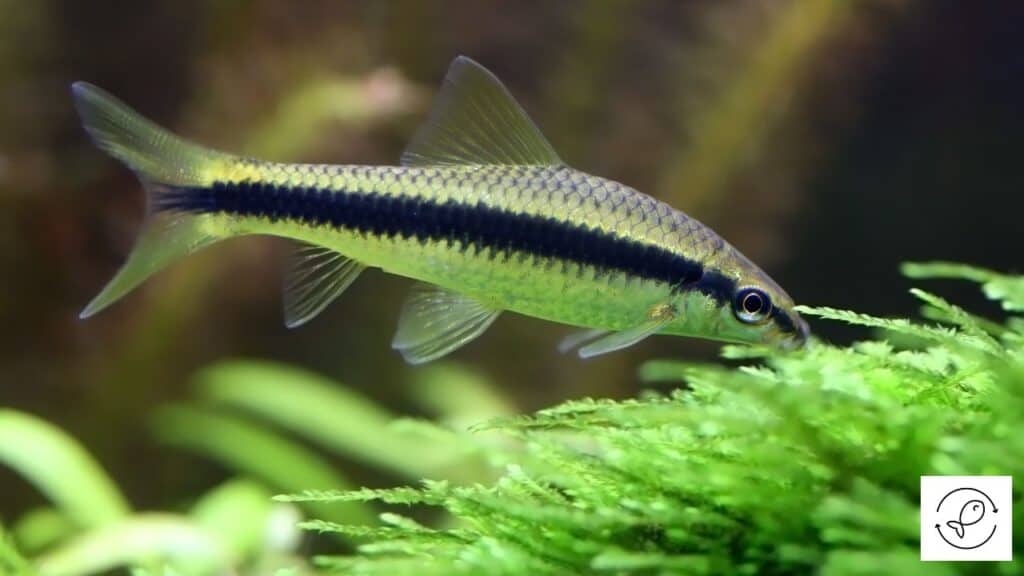Today, we’re diving into the world of algae eaters – those little (and sometimes not-so-little) helpers that can make or break the cleanliness of your fish tank.
We’re going to check out 12 different algae eaters, and we’ll give you the lowdown on which ones are the good ones, which ones might not live up to the hype, and even those that might be pointless when it comes to keeping your tank algae-free.
Whether you’re a seasoned aquarist or just starting out, you’re bound to find some useful nuggets of info here. So, let’s get into it!
The Bad Algae Eaters
There’s only one bad algae eater…
12. Chinese Algae Eaters
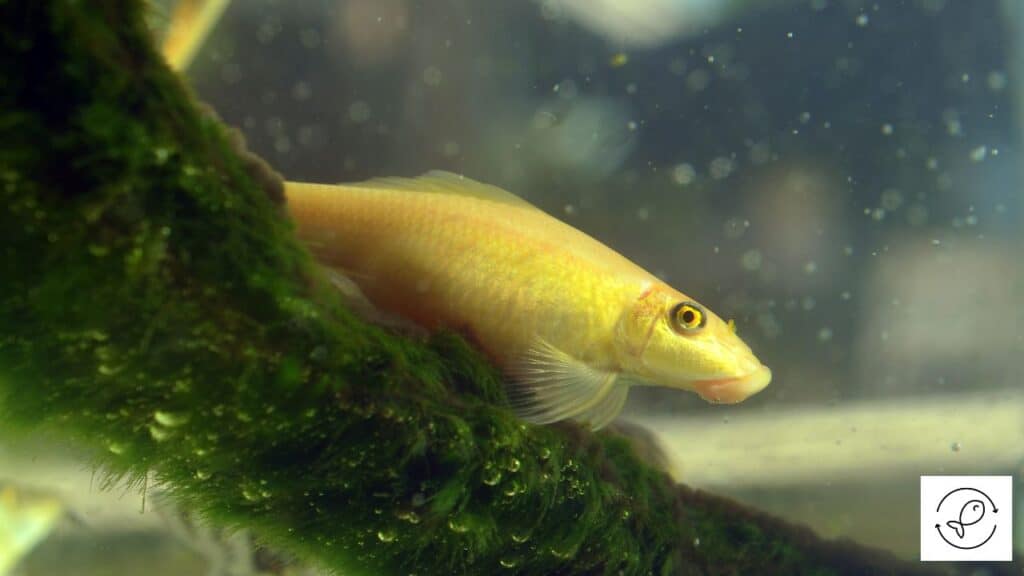
Chinese algae eaters might sound like perfect tank cleaners, but they munch on algae only when they’re tiny, about 1 to 3 inches.
As they grow bigger, they switch from being helpful to becoming a bit of a problem.
They start by competing with your other fish for food and space. And if they become big, they might even start nibbling on your fish instead of algae!
When you’re at the pet store, spotting a Chinese algae eater is pretty straightforward. But here’s where it gets tricky: sometimes, they’re labeled as Siamese algae eaters or just plain old “algae eaters.”
The real deal, the Siamese algae eaters, tend to be pricier. So pet stores usually make it clear when they’re selling those.
Now, to tell a Chinese algae eater apart from its Siamese cousin, you’re looking for a specific checkered or dot-dash pattern along the side. The Chinese algae eater are too small to show the checkered pattern clearly, but that’s your clue.
If it doesn’t look like a Siamese algae eater (Siamensis), which is generally a better choice, think twice before bringing it home, even if it’s super cheap.
The Useless Algae Eaters
There are 3 useless algae eaters. They’re useless as algae eaters but they’re great to keep as aquarium fish.
11. Cherry Barbs
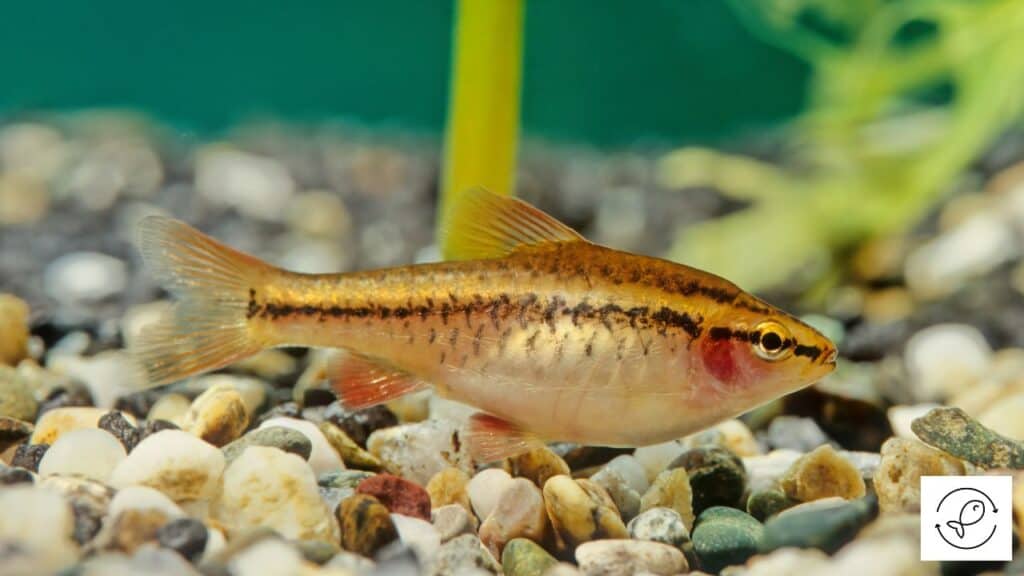
Cherry barbs are little and omnivores, which means they eat pretty much anything, including a bit of algae.
But here’s the thing, they’re not exactly the algae-eating machines you might be looking for. However, don’t let that deter you from adding them to your tank. Cherry barbs are actually fantastic aquarium fish.
They’re super easy to take care of, won’t make a dent in your wallet, and are downright beautiful.
The male Cherry barbs are a sight with their bright, cherry red color. The females, on the other hand, have a more subdued, brownish hue, kind of like the color of a cherry pit.
You could go for just males in your tank, but they’re usually pricier. But, having both males and females together is a lot more fun. You get to see their social side, watching them school around the tank together.
So, while they might not be your algae-clearing heroes, Cherry barbs are still pretty amazing fish to have.
They might not nibble algae off your tank walls like some other fish, but they’ll definitely add some lively color and dynamics to your aquarium scene.
10. Black Mollies
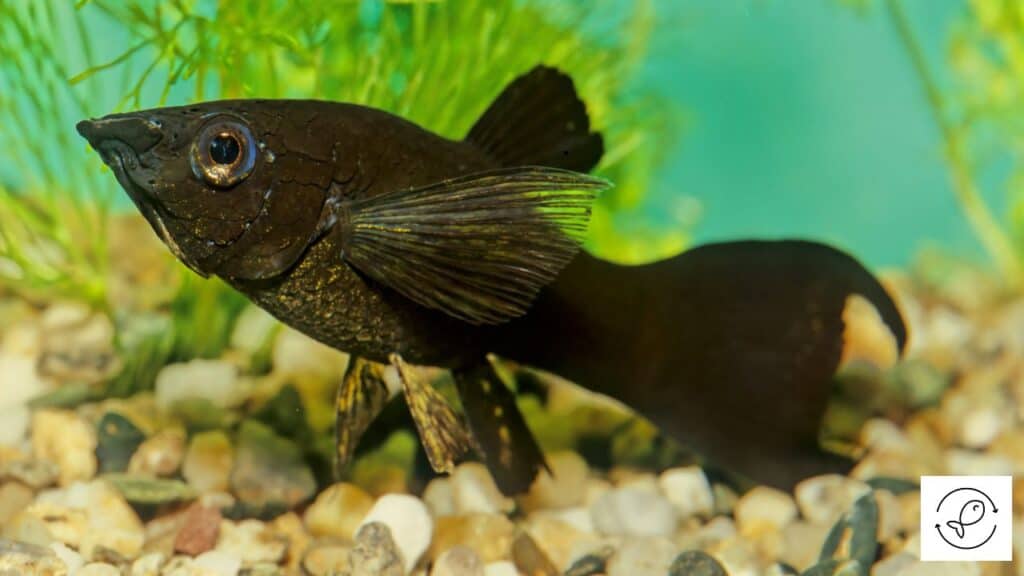
You might’ve seen folks talking about Black mollies all over the internet as algae eaters. Well, let’s set the record straight.
Mollies, including the fancy-looking Sailfin Mollies and the regular ones, all belong to the Poecilia family. They do snack on algae, but if you’re thinking they’ll keep your tank algae-free, you might be in for a surprise.
They’re more like casual nibblers than dedicated algae cleaners.
However, black mollies stand out beautifully against a green backdrop in your tank. It’s quite the visual treat!
Black mollies aren’t the solution to your algae problems but are fantastic to have in your aquarium. They’re livebearers, which means you’ll get to see baby mollies swimming around if conditions are right.
A little pro tip: adding a pinch of salt to your aquarium can really help them thrive, prevent some health issues, and encourage them to reproduce.
9. Neocaridina and Caridina Fancy Shrimp
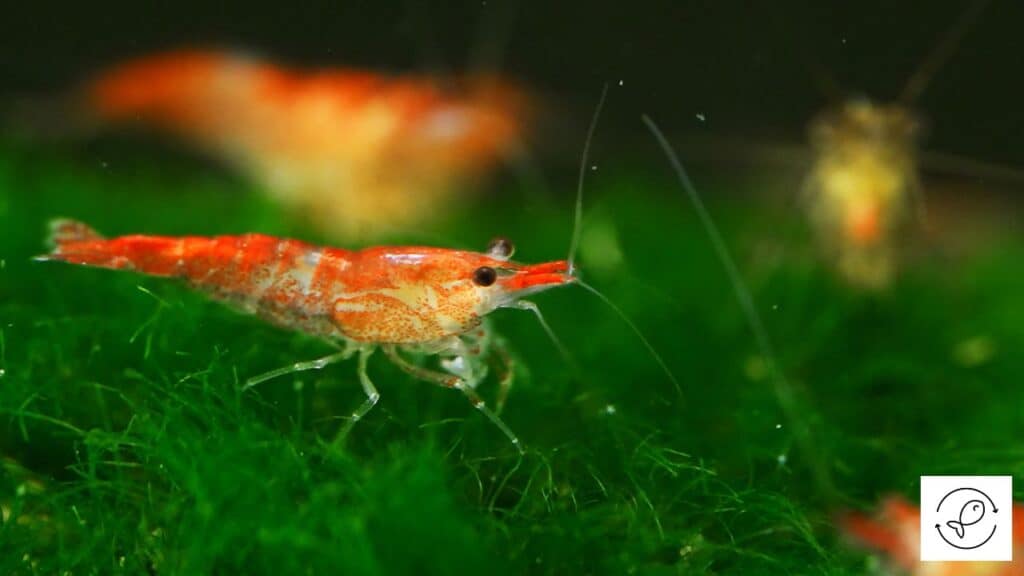
Neocaridina and Caridina Fancy Shrimp are basically vegetarian. They love to munch on the bits and pieces of plant matter that end up at the bottom of your tank, which is pretty cool.
But, because they’re so tiny, thinking they’ll keep your aquarium free of algae is a bit of a stretch. They do their bit, sure, but they’re not going to make a huge dent in controlling algae in a standard-sized tank.
The effective ways to keep your aquarium algae-free are regular water changes, maintaining good water quality, and watching the nutrient levels.
This means not overfeeding your fish and being careful with how much light your tank gets, whether it’s from direct sunlight or an artificial source.
The Good Algae Eaters
There are 8 good algae eaters and they are…
8. Amano Shrimp

Amano Shrimp are the rockstars of the algae-eating world in aquariums. These little creatures really come into their own as they grow bigger.
When you pop into a pet store, you’ll usually see them at a smaller size, but give them time, and they’ll grow larger and become even more effective at their job.
Amano Shrimp are pretty tough and can handle a lot in your tank. One of their superpowers is tackling those annoying strands of hair algae that can start to take over.
So, when people talk about algae-eating shrimp, they’re often referring to these guys—the Amano shrimp. They’ve earned a reputation for being good at keeping your tank cleaner and healthier.
Now, with Amano Shrimp covered, let’s switch gears and talk about snails, another interesting group in the world of aquarium cleaning crews.
7. Trapdoor Snails
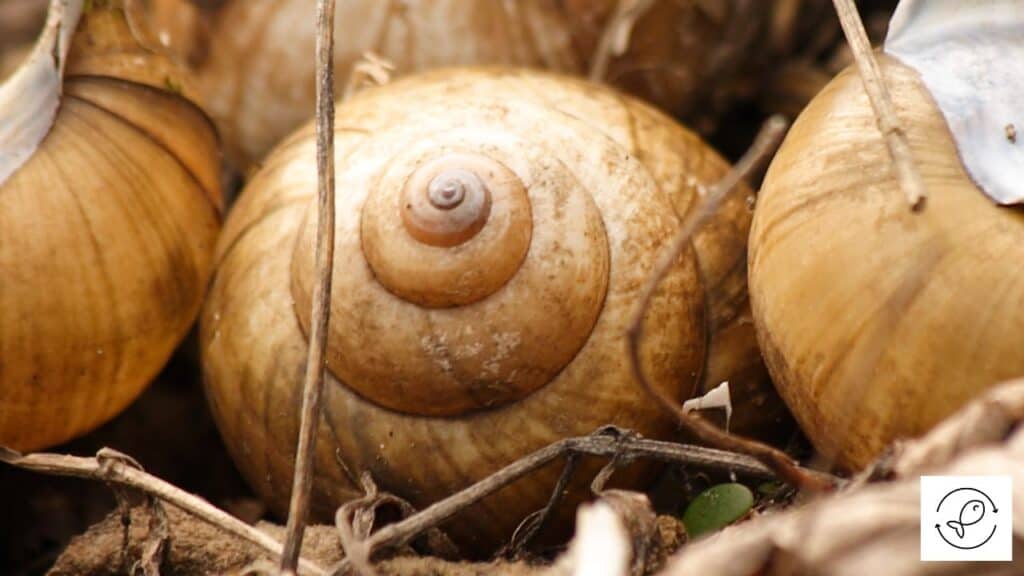
Trapdoor snails are a fantastic choice if you’ve got a tank that’s at room temperature or leans on the cooler side, like where you might keep goldfish.
You might not know this, but you can actually have mollies and some other fish living comfortably in room temperature water too. But when it comes to Nerite snails, they’re not too happy in those cooler conditions.
So, about the Japanese Trapdoor snails—these guys are not just useful; they’re also quite easy on the eyes.
They’ve got this neat little green shimmer going on, and they can grow up to 2 inches long from tip to tip when they reach their full size. Pretty impressive, right?
6. Nerite Snails
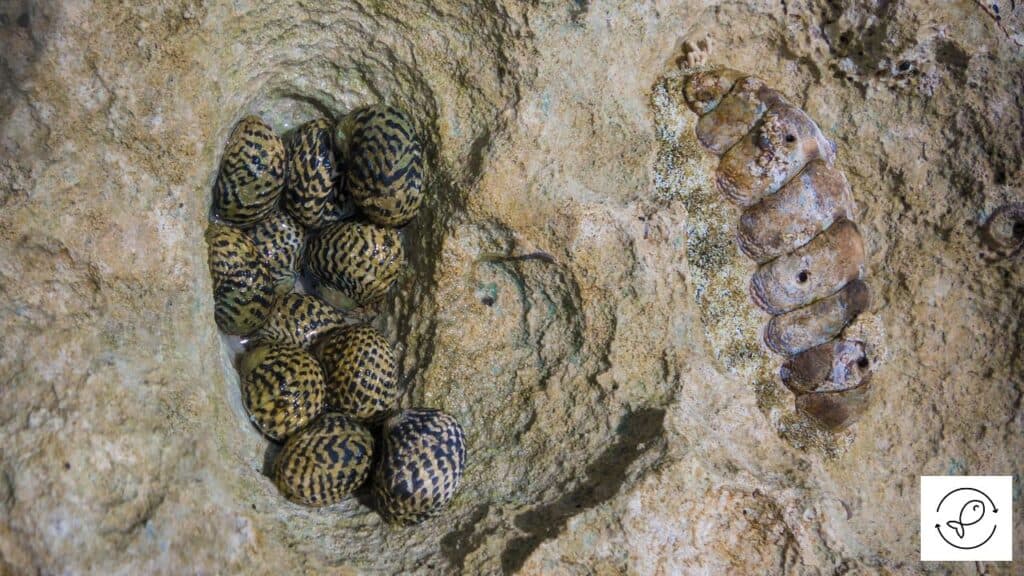
Now, moving on to the superstar of algae-eating snails: the Nerite snail. These snails are like the heavyweights in the world of algae control.
They’re especially renowned for their appetite for algae. This makes them a top pick if you’re looking to keep your tank’s algae in check.
One of the coolest things about them is that they come in a bunch of different colors and patterns, which adds some nice flair to your tank.
Now, here’s where they really shine for freshwater aquariums: they can’t breed in fresh water. They need brackish (a mix of fresh and saltwater) or saltwater to make baby snails.
This means in your freshwater tank, they’ll do their job eating algae and cleaning up waste without turning your tank into a snail nursery.
Nerite Snails are like the peaceful, hardworking roommates of the aquarium world. They won’t munch on your plants, but they will happily clean up algae and detritus.
So, you get all the benefits of their cleaning services without worrying about them overpopulating your tank.
5. Panda Garra
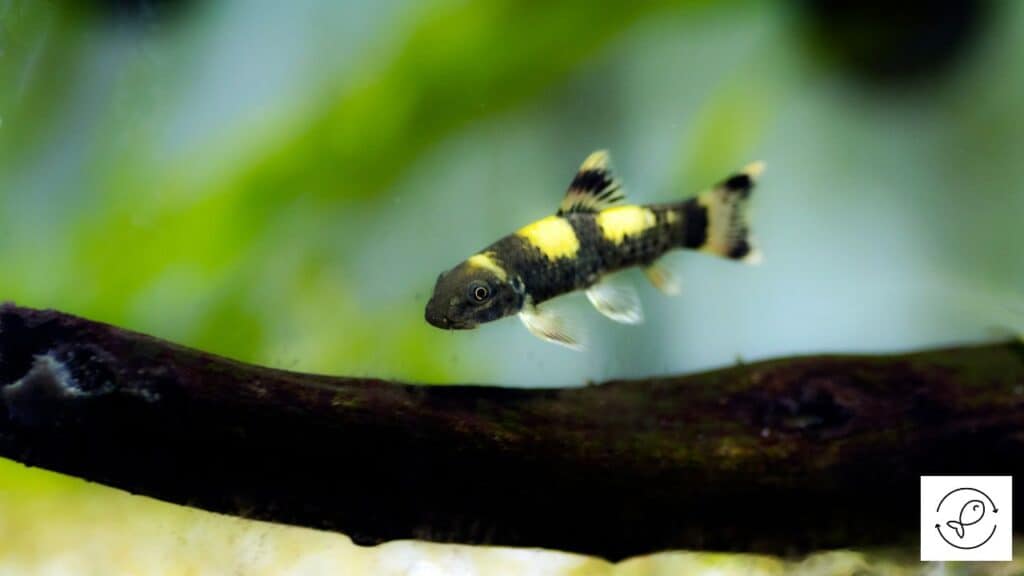
Gobies are a big fish family. While most of them aren’t going to win any awards for eating algae, there’s one that standouts called the Panda Garra.
A Panda Garra guys can grow up to about 4 inches long, and they’re pretty chill fish that play nice with others in your tank.
What’s cool about them is their love for munching on plant leftovers and algae. So, if you’re looking into gobies because you need a helper against algae, the Panda Garra is your star player from this family.
4. Hillstream Loaches
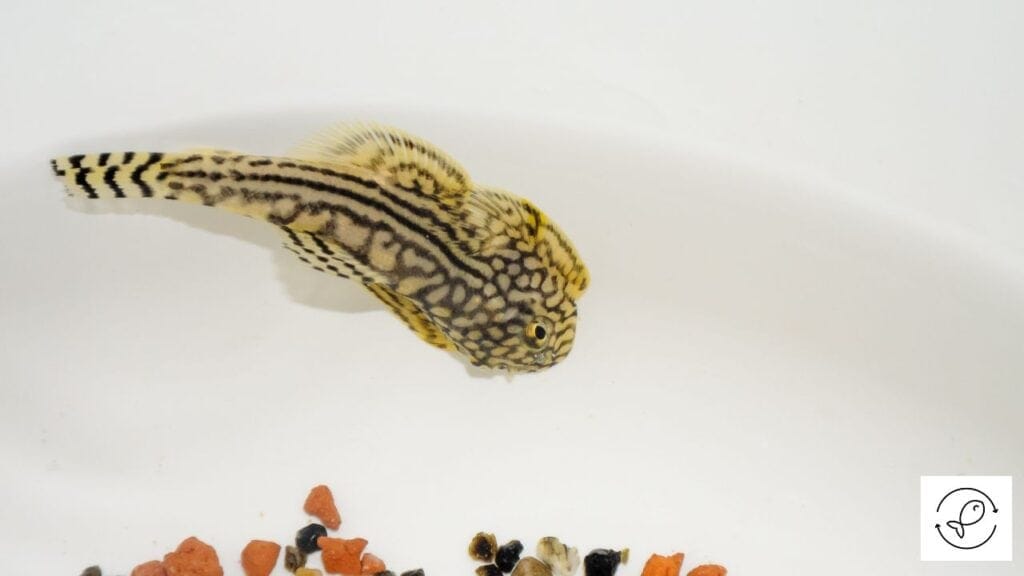
Generally speaking, loaches aren’t your go-to for controlling algae, but there’s an exception here as well: the Hillstream Loaches.
Hillstream Loaches are super cool fish that come from fast-flowing streams in the wild. Their main gig is munching on algae that grows on rocks.
Thanks to the fast waters of their natural habitats, they’ve developed a sleek, low profile. This shape helps them avoid being swept away—they can just snug up against a rock and graze without a care in the world.
In your tank, they’ll do much the same, but on the glass, keeping it clean by eating the algae off it.
Catching a Hillstream Loaches can be a bit of a mission, though.
Among Hillstream Loaches, the Reticulated Hillstream Loach is a real looker, highly prized for its unique color pattern. Then you’ve got the Polka Dot Hillstream Loaches, which, as you might guess, come with cute little black dots.
Despite these differences, all Hillstream Loaches share the same streamlined body shape, designed to keep them glued to rocks (or your aquarium glass) even in strong currents.
3. Plecos
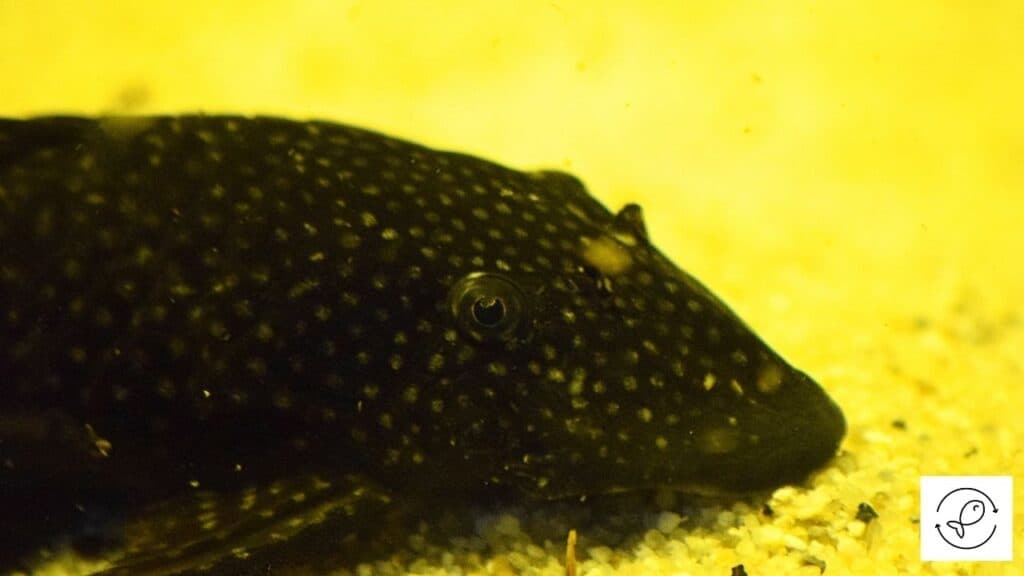
Plecos, short for Plecostomus, are a subgroup of catfish, and out of the 4000 catfish species available to the aquarium trade, about 200 of them are plecos.
Among these, the Bristlenose Plecos and the Rubber Lip Plecos are the superstars when it comes to controlling algae and being awesome scavengers.
Here’s why people really like Bristlenose plecos and Rubber Lip plecos for their tanks:
- They’re great at cleaning up, munching on some types of algae, and scavenging leftovers. This helps keep your tank tidy.
- They stay relatively small, maxing out around 3 to 7 inches. This means they’re not going to outgrow your tank and start redecorating by uprooting your plants.
Plecos are chill enough to hang out with other fish in a community tank but are also tough enough to hold their own in a tank with cichlids, which are known for being a bit more aggressive.
Bristlenose plecos start tiny, about an inch long, and take their sweet time growing to their full size, but they’re helpful the whole way through.
A cool thing about these catfish is how they help combat algae. They eat detritus (organic waste) which, when it breaks down, could otherwise make a nice feast for algae.
So, by eating up this stuff, plecos are cutting down on the food supply for algae. Plus, they directly eat algae too.
Rubber lip plecos are especially good at this because their big mouths are perfect for scraping off film algae.
While they’re great at what they do, don’t expect plecos to handle all the algae in your tank on their own. They eat until they’re full and then stop, so they’re part of your algae control team, not the whole solution.
Now, onto a different topic, the Otocinclus. These little guys are another option for algae control in your tank. They’re wild caught since, so far, no one’s managed to breed them in captivity. If you’re up for a challenge, there’s an opportunity for any hobbyist looking to make a breakthrough with breeding Otocinclus.
2. Otocinclus
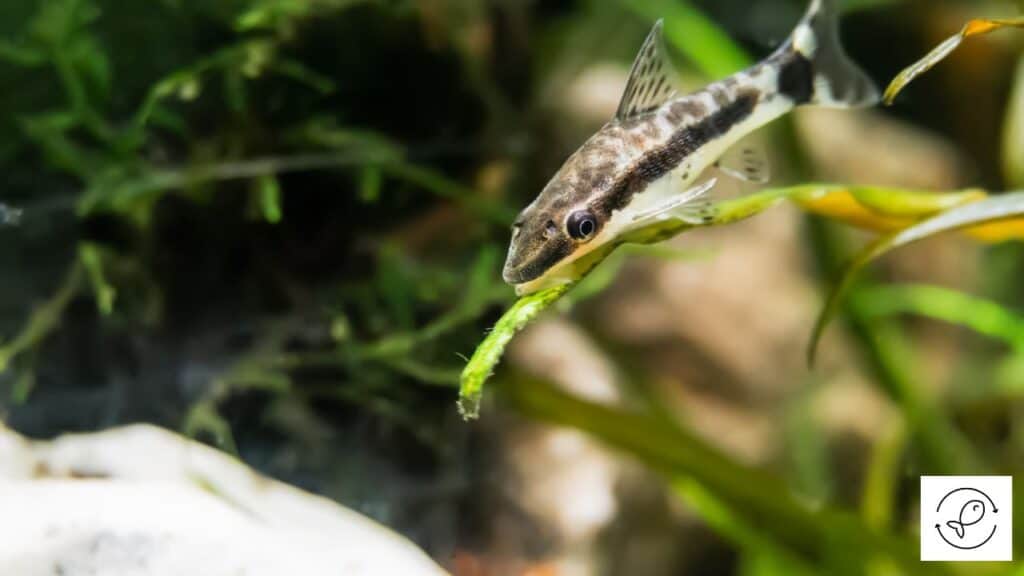
Otocinclus are these little algae-eating champs from South America. They’re pretty common down there and are a budget-friendly option for your aquarium, usually costing less than five dollars at the pet store.
They’re known for their algae-eating habits, munching on the same nutrients that algae thrive on, and they’re particularly good at cleaning up film algae.
But, just like with other algae eaters, Otocinclus have their limits. They eat until they’re no longer hungry, which means they won’t clear out all the algae in your tank if you’ve got a big problem on your hands.
They’re part of the solution, but they can’t handle a massive algae takeover all by themselves.
And now, onto the Siamensis or Siamese algae eater.
1. Siamensis Algae Eater or Siamese Algae Eater
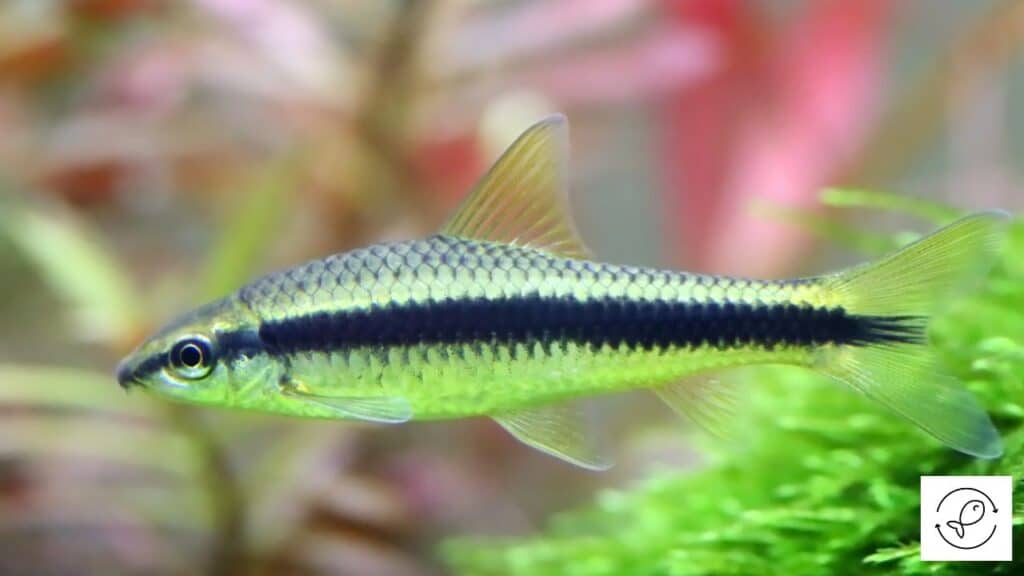
The Siamese algae eater is a cool little fish that hails from Thailand. It’s got a look-alike called the Flying Fox, and funny enough, these two often get caught together from the wild.
Both of them are pretty good at tackling algae in your tank.
To tell a Flying Fox apart from a Siamese algae eater, check out its dorsal fin for a big black stripe. Plus, the Flying Fox sports a bit more gold along its sides compared to the Siamese algae eater. However, they really do look a lot alike at a glance.
Siamese algae eaters can grow up to about 4 inches long and are pretty consistent algae eaters throughout their lives, which is great for keeping your tank clean.
These fish, along with the others we’ve talked about, are usually not hard to find and should be available at your local pet store.
So, if you’re looking to add some natural algae control to your tank, these are some options to consider!

